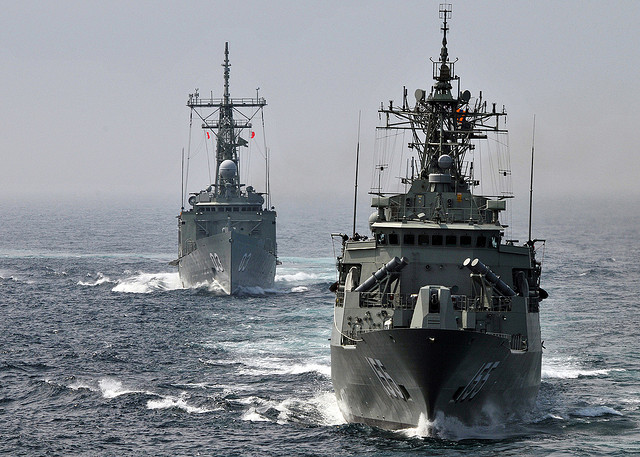Singapore has witnessed a growing maturity in the level of public debate on social issues. The same, however, cannot be said of the sphere of defence policy, which has largely remained the domain of the professionals — policymakers, practitioners, academics and defence pundits.
Concerns about the level of defence spending and contributions to National Service (NS) have periodically been raised in the blogosphere and other forms of social media, but they lack the same rigorous treatment or sustained traction of social and day-to-day “bread and butter” issues.
Why is the discourse of defence policy in the public space important? Like the debate on other issues in the public domain, a more pluralistic exchange on defence issues, particularly by independent voices not beholden to any interest group, can act as a check against the “group-think” of professionals and the dominance of partisan agendas.
Rather than impede the decision-making process, the rigour of such a discourse will throw out options hitherto hidden by “expert” blinkers and institutionalised biases.
CITIZEN ARMY
More importantly, Singapore cannot afford to have a military that is divorced from its society — like in the case of some countries with professional militaries.
In a military that depends on citizen soldiers as its core, public discourse on the raison d’être of Singapore’s defence policies and issues that directly impact Singapore’s citizen-soldier model has to be strengthened and factored into the crafting of defence policy.
Expanding the process — from the dominant approach of State-led education of citizen-soldiers about the importance of NS, to one where space is created for citizen-soldiers to define for themselves and take ownership of the “why we serve” question — will go a long way in strengthening Singapore’s citizen-soldier model and the Singapore core.
THE EXCLUSIVITY TRAP
One of the most enduring philosophical explanations of the nature of war is to be found in the writings of the 19th century Prussian military thinker, Carl Von Clausewitz.
For Clausewitz, war exists in a Trinitarian relationship between rational forces embodied by the calculated policies of government, non-rational forces encountered by military forces on the battlefield (such as fog, friction, uncertainty, probability and chance), and irrational forces personified by the passion of the people. The passion that fuelled the rank-and-file of France’s citizen-soldiers was harnessed by Napoleon’s military genius to build an empire which was ultimately undone by his ambitious hubris.
Indeed, Georges Clemenceau, the wartime Prime Minister of France from 1917-1920, was known to have remarked: “War is too important a matter to be left to the military”. War, and by that extension defence of the realm, is a matter of national and personal survival that should not be the exclusive domain of military professionals and — in today’s context — other experts.
Beyond the military, other experts such as academics and defence pundits, too, can be susceptible to intellectual biases, dogmatic mindsets and entrenched assumptions that cloud decision-making.
In particular, for some countries with professional militaries, the military profession has become a community apart from the society that it defends. This separation then becomes the breeding ground of military exceptionalism — an inherent belief that only the professionals are qualified to discuss military matters.
In a critique of British military performance in Iraq and Afghanistan, a former British intelligence officer, Frank Ledwidge, argued that the “manifestation of British military exceptionalism” had led to failures at the strategic and operational levels in both military campaigns.
POLICY IN PUBLIC DISCOURSE
In the Singapore Armed Forces, where citizen-soldiers still constitute its core, more can be done to harness the passion of its NSmen, particularly as a “brain trust” to solve problems and improve processes that require skills and ideas not easily found within the defence establishment.
Beyond that, there has to be a greater confidence in the ability of Singaporeans to help shape defence policy through discourse in the public space. That is not to say that such a process is to be encouraged in all areas of national defence. Debate on matters where operational sensitivity is an issue and where the lives of service personnel may be put in danger should be off-limits.
However, when it comes to public discourse on the raison d’être of Singapore’s defence policies and those that directly impact its citizen-soldier model — such as the inclusion of females or non-citizen volunteers in NS — the Government should encourage this process by the dissemination of green papers to solicit the feedback of Singaporeans.
In addition, conditions for the development of a citizen-led rather than professional-led space for a sustained rigorous debate of such issues should be encouraged. A distinct citizen-led discourse does not mean that ideas arising from such a process cannot be incorporated into policymaking — on the contrary, the growth of such a space has the potential of serving as a “public brain trust” for out-of-the-box thinking and problem-solving.
VULNERABILITY AND RESILIENCE
Singapore’s strategic posture at the turn of the 21st century is succinctly explained in an excerpt from a defence policy paper, Defending Singapore in the 21st Century, published in January 2000.
It states: “A small and open country like Singapore is especially susceptible to unpredictable shifts in the international environment. This vulnerability will increase as we become more integrated with the global economy. What happens in another part of the world can have immediate and great spillover effects on our economy and security.
“But we cannot turn back from globalisation. We depend on the world economy for a living. We will have to work more actively with others to safeguard peace and stability in the region and beyond, to promote a peaceful environment conducive to socio-economic development ... The end of the Cold War may have reduced the risk of a superpower conflict, but regional and sub-regional conflicts remain a real possibility.”
By and large, this observation from more than a decade ago still remains an accurate representation of the international system that Singapore is situated in. As a small state, we may be more susceptible to global shifts, but therein lies the imperative of harnessing the collective passion of those who form, and want to be part of, the Singaporean core.
In short, the creation of space for public discourse on defence issues built on public trust will go a long way in creating a “public brain trust” that is resilient, dynamic and passionate about serving Singapore.
ABOUT THE AUTHOR:
Ong Weichong is an Assistant Professor with the Military Studies Programme at the Institute of Defence and Strategic Studies, S Rajaratnam School of International Studies.





